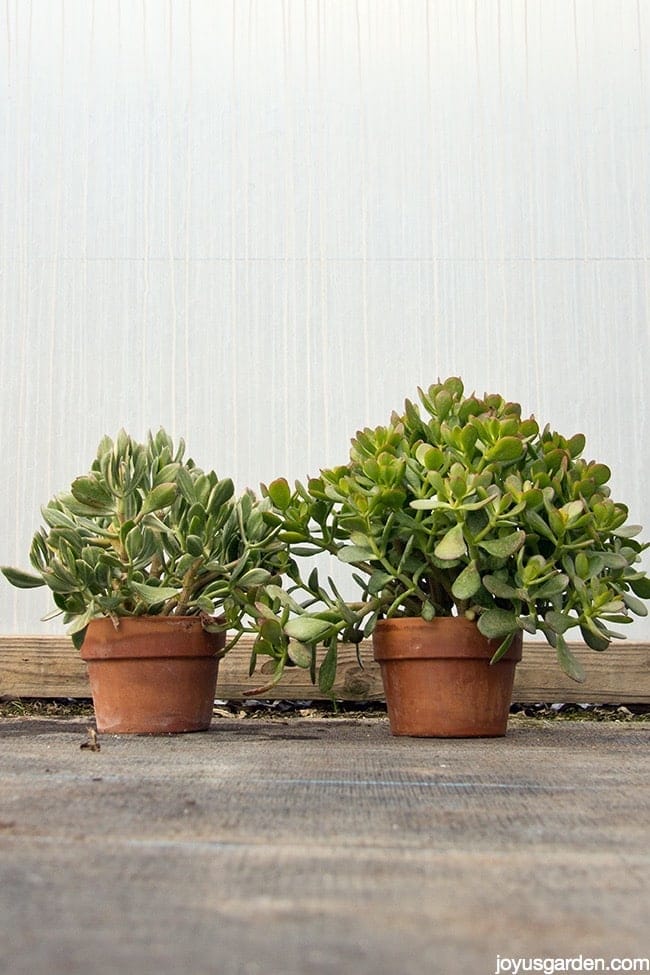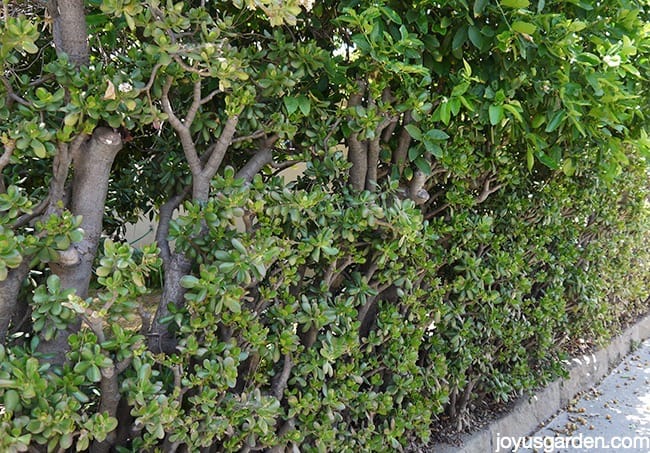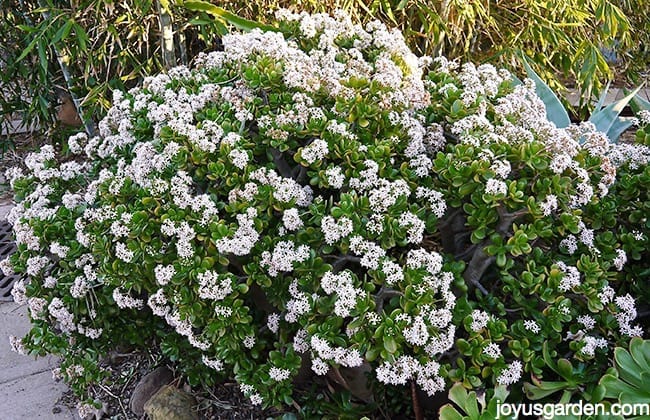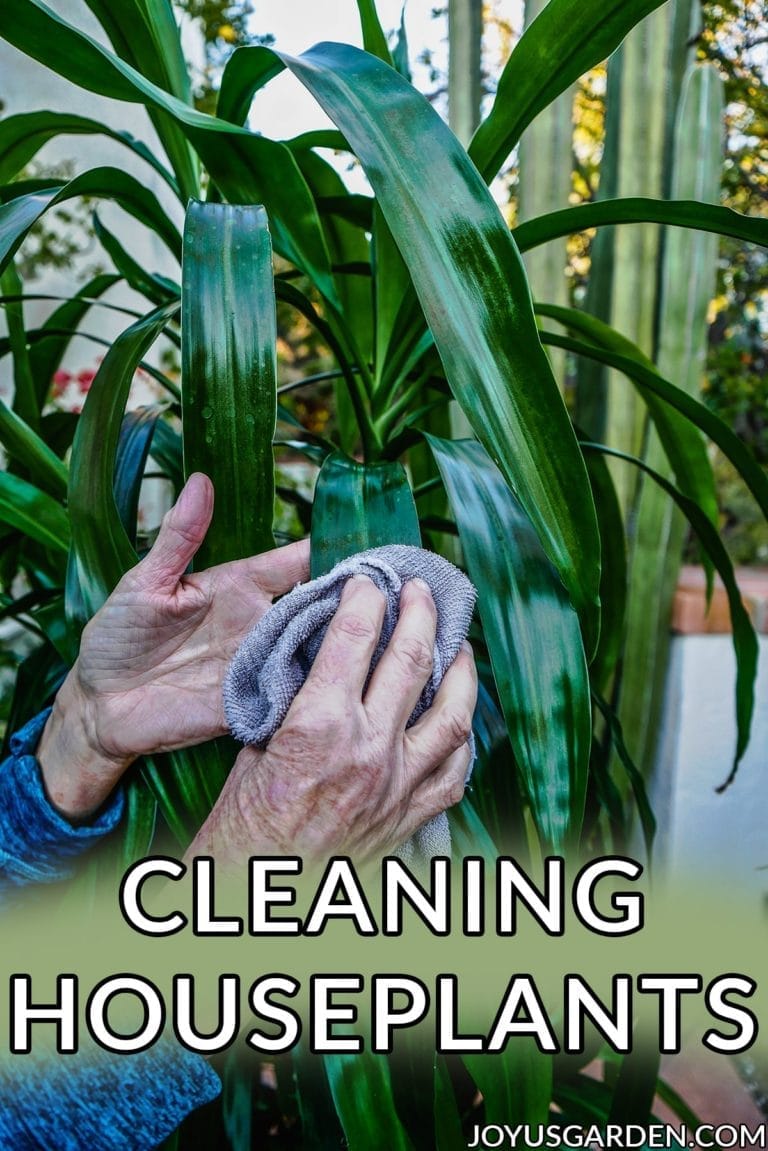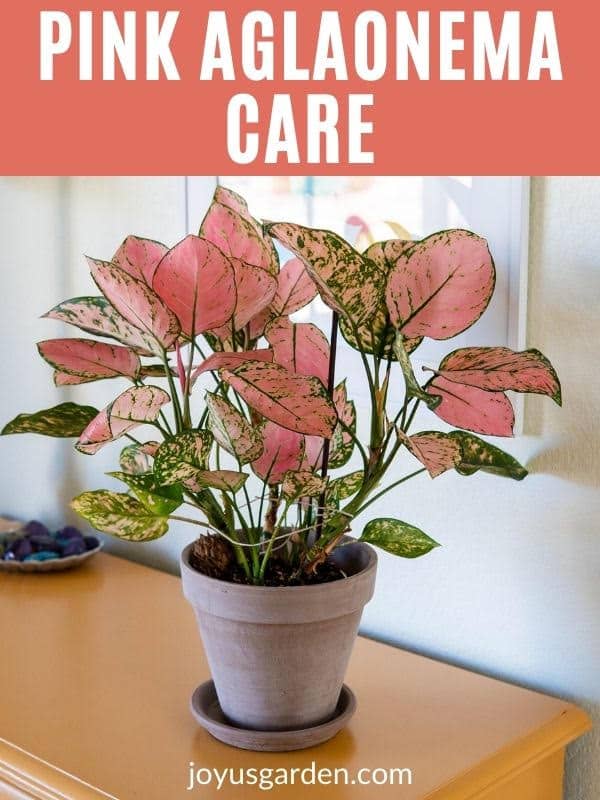Jade Plant Care: Easy Tips for Growing Indoors & Out
Oh, Jade Plants… some people adore you, and others… not so much. Let’s face it: you’re one of those plants that people seem to have an opinion about. But love ’em or leave ’em, there’s no denying that this succulent superstar is one of the easiest plants to care for—whether it’s brightening up a sunny spot in your home or adding charm to the garden. With proper Jade Plant care, you can keep yours looking good year-round with minimal effort.
Jade plants come in a surprising variety of species and varieties, characterized by different leaf colors, shapes, and sizes. I had four happily growing in my Santa Barbara garden—you’ll catch a glimpse of them below and in the video at the end.
For this post, I’ll be focusing on Crassula ovata, the classic jade you see everywhere, from garden centers to living rooms. It’s the one that’s easiest to find and easy to care for, making it perfect for beginners who want a hardy, low-maintenance succulent that rewards you with glossy, thick leaves. Aside from a few light preferences, all jade plants are cared for in much the same easy way.
Botanic Name: Crassula Ovata Common Name: Jade Plant
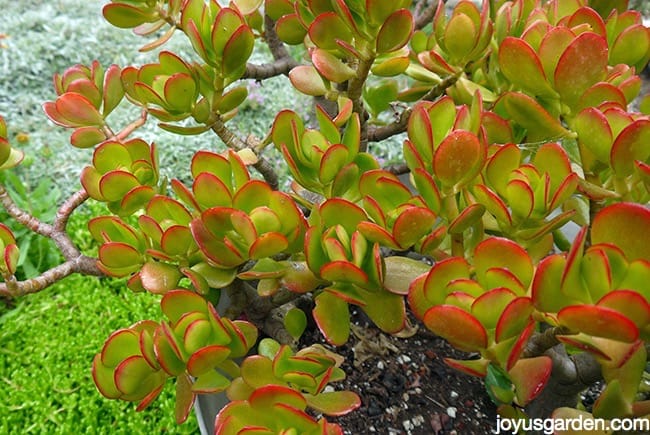
Easy Tips for Jade Plant Care Indoors and Outdoors
Size
Outdoors, up to 9′ tall. Indoors, stays much smaller. As a houseplant, they’re generally sold in 4, 6 & 8″ pots, with a maximum height of around 1′ tall. The smaller the pot, the smaller and more compact the plant will stay.
Growth Rate
Slow.
Uses
Jades are excellent container plants, suitable for both indoor and outdoor use, and can be planted directly in the garden in suitable climates.
Jade Plant Indoors
Light Requirements
As a houseplant, Jade Plants need as much bright light as possible, at least 6 hours. They love the sun and can be placed near a south or west-facing window. Just be sure they’re not touching the hot glass, as it could cause sunburn.
They aren’t suited for low-light conditions. If the plant is not receiving enough light, it will become leggy, and its growth will be stunted.
Growing up, we had a large Jade (3′ x 3′) growing in our greenhouse in Connecticut, but the glass had a protective coating. The irony now is that I thought it was such an exotic rarity to have a Jade that size, but in California, you see them used as low hedges!
Watering
Their fleshy leaves and stems are full of water. You want the soil to dry out before watering again. These plants are great for frequent travelers because they don’t need to be babied.
I can’t give you an exact watering schedule. Adjust the frequency according to your plant’s pot size, soil mix composition, time of year, and your home’s environment. As a general rule, water your Jade Plant every 2-3 weeks in the sunny, warmer months. Once a month is enough in the winter months.
For more details, refer to our guide to watering succulents indoors.
Temperature
If your home feels comfortable to you, your houseplants will likely feel the same. Just keep your Jade out of the direct path of cold drafts, AC vents, or heat sources.
Jade Plant Outdoors
USDA Hardiness Zone: 10-11 optimum. In zone 9, best in containers. You can find your zone here.
Light Requirements
Jades can handle the sun, but not intense, all-day hot sun. Like most fleshy succulents, their water-filled leaves and stems will burn. In coastal Santa Barbara, CA, where I previously lived, they did great in a sunny location. I now live in the Arizona desert, where the intense summer sun and heat are more than Jade Plants can handle.
Wondering how much sun succulents need? You’ll find details in this guide.
Watering
In the garden: When I lived in coastal Santa Barbara, my Jades were on drip and received water about every ten days during the warmer months. How often you’ll need to water depends on your climate and soil type, but always let the soil dry before watering again. Jades don’t like soggy conditions and must be in freely draining soil (more on that below).
I had a client in a coastal town just south of San Francisco with a Jade growing on the west side of her house, ideally situated on a hillside where the water drained away readily.
In pots: I watered my container Jades on a similar schedule—sometimes a bit more often if the weather was hot or they were getting a lot of sun. Smaller pots require more frequent watering than those in larger pots.
Wondering how often to water succulents This guide will help.
Temperature
Jades thrive outdoors in coastal Southern California, where temperatures range from about 40–90°F. They will bounce back from a light freeze, though the foliage will likely show some damage.

Jade Plant Care Basics For Both Indoors & Outdoors
These basic care points apply to Jade Plants, whether you’re growing them indoors or out. Visit our succulents category to explore more helpful tips and guides.
Soil
Jades need a well-draining soil mix with good aeration. In my Santa Barbara garden, I mixed in sandy loam from a local landscape supplier with the native soil to ensure water drained freely. Like all succulents, Jade Plants won’t tolerate soggy soil and must have excellent drainage.
I use a DIY succulent and cactus mix for all my succulent container plantings, both indoors and out. If you prefer to buy, there are many choices online and in nurseries and garden centers.
Repotting/Planting
The best time to repot/plant is spring, summer, and early fall.
They don’t need repotting very often, maybe every five years or so. Older Jade Plants are hefty, so if you’re repotting or transplanting one, consider getting some assistance!
If planting in a pot, use a potting mix formulated for succulents. Make sure there are drainage holes on the bottom to allow excess water to drain out freely. When it comes to pots, I’ve found that Jade isn’t fussy about material, though I think they look best in a clay pot.
Just be warned, as Jade Plants grow taller and broader, they become very top-heavy and will need a larger, more substantial base to keep them from falling over.
Here’s a post dedicated to repotting Jade Plants with additional details.
Fertilizing/Feeding
Jades, like most other succulents, aren’t needy, but they appreciate the nutrient boost. During the growing season is the best time to do it.
How often you feed your succulents depends on the type of fertilizer you’re using and your climate. I live in a sunny climate with a long growing season. During this period, I feed my succulents monthly (seven times a year). Two to three times a year may be sufficient for your Jade and growing zone.
I like a water-soluble fertilizer, either liquid or granular. I don’t use special fertilizers; I use the same ones I use for all my other houseplants. Currently, I’m alternating between Foxfarm Grow Big and Sea Grow All-Purpose.
Don’t fertilize too often or use more than the recommended amount—excess salts can build up in the soil over time and eventually burn the plant’s roots. Learn more about fertilizing succulents here.
Pruning
Jades grow slowly, so pruning is mainly for shaping, controlling size, or taking cuttings. I occasionally prune for propagation and to share the cuttings with others.
Propagation
Jades are very easy to propagate from stem cuttings. Just let the cuttings heal over (air dry out of direct sun) for 5–14 days before planting them in a light potting mix. For more details, refer to our guide to propagating succulents from stem cuttings.
The big Jade that grew in my backyard actually came from two hefty cuttings—each about 2 feet long—that I brought back from San Diego. They looked shriveled and half-dead when I planted them, but they perked up in no time.
You can propagate from a single leaf, but since Jade Plants grow so slowly, stem cuttings are the better option.
Pests
My Jade Plants in the garden never had pest infestations, but indoors, they’re prone to mealybugs. The best way to remove these white, cottony pests is with a cotton swab dipped in rubbing alcohol (70% isopropyl). They do lay eggs, so check back every couple of weeks to make sure you’ve gotten them all. Insecticidal soap also works.
Other pests to watch for include spider mites and scale.
Flowering
In the winter and early spring, my Jade Plants in the garden flowered like crazy. They got covered in clusters of white blossoms – the SoCal version of snow!
Indoors, it’s not common for one to flower.
Jade Plant Care Video Guide
Jade Plant Care FAQs
Why is my Jade Plant turning yellow?
The main reason is likely too much water. Jades are succulents, and like to dry out between waterings. Other reasons include excess fertilizer, too little water, and sudden temperature fluctuations.
How big can a jade plant get indoors if it’s never pruned?
Outdoors, Jades can reach 8-9′ tall. Indoors, the biggest I’ve seen is 2′ tall.
Can jade plants be styled or trained as bonsai indoors?
Yes—Jade Plants are often trained as bonsai, and the results can be stunning. I’ve seen some beauties at The Huntington in the Pasadena area and at local bonsai society exhibitions.
Can jade plants be kept outdoors during the summer?
Your indoor Jade would love to spend the summer outdoors. Just be mindful of the sun and heat. A covered patio or porch will protect from too much rain. And, don’t forget to hose the plant down before bringing it back in to keep unwanted critters from hitchhiking in.
How do Jade Plants handle coastal conditions like salty air or fog?
Jade plants handle coastal conditions like salty air and fog just fine—they’re tough succulents. In seaside towns like Santa Barbara, where I used to live, you’ll often see huge old Jades thriving outdoors year-round.
They don’t mind the foggy mornings and evenings, and the salty air doesn’t seem to bother them. Just make sure they’re planted in well-draining soil and not sitting in soggy soil.
Are jade plants drought-tolerant enough to use in xeriscaping?
Yes. Their fleshy leaves, thick stems, and trunks are full of water, so they pair beautifully with other succulent plants in a xeriscape garden.
Why do some people gift jade plants for weddings, housewarmings, or new businesses?
Here’s a question just for fun! According to Feng Shui principles, a Jade Plant brings prosperity and good luck (especially when flowering). It also signifies the joy of friendship—a lovely gift indeed!
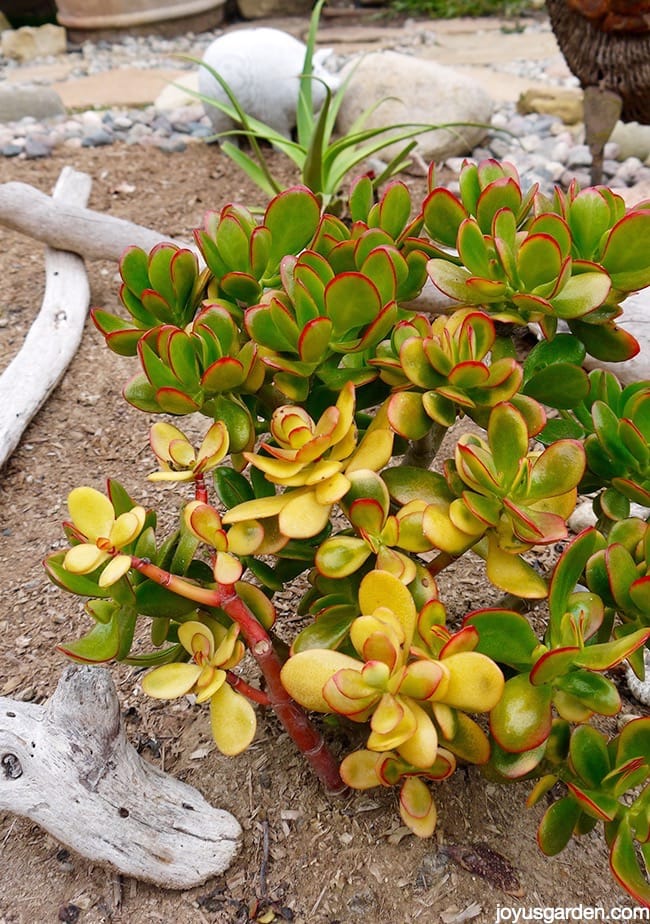
Conclusion: Jade plant care is easy—give yours bright light, let the soil dry between waterings, and enjoy this tough, fleshy-leaved beauty. It’s a long-lived plant that rewards you with joy for years, not to mention plenty of cuttings to share!
Happy Gardening,

